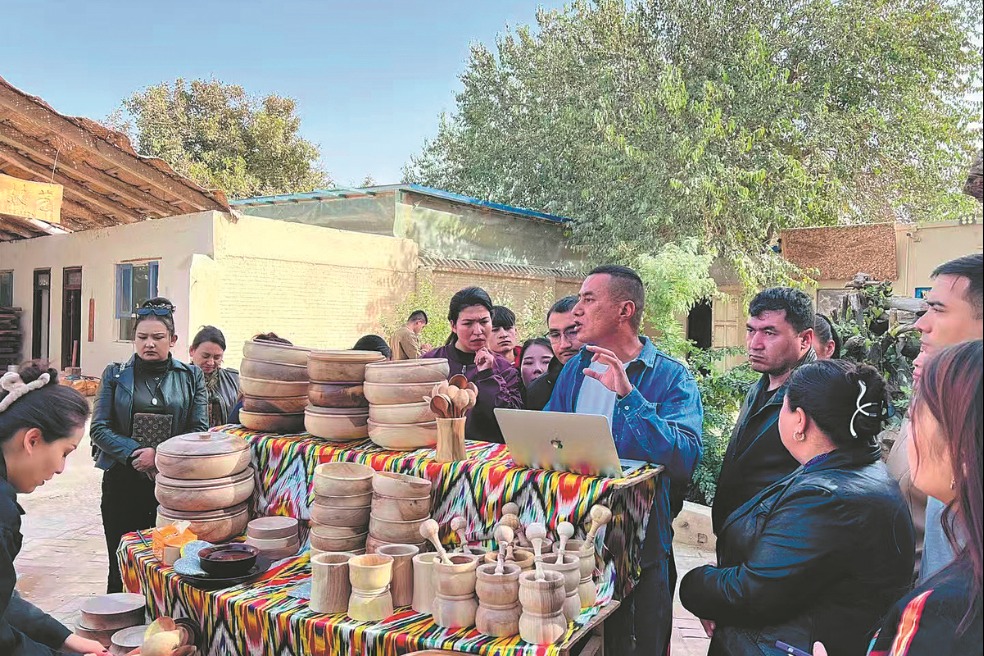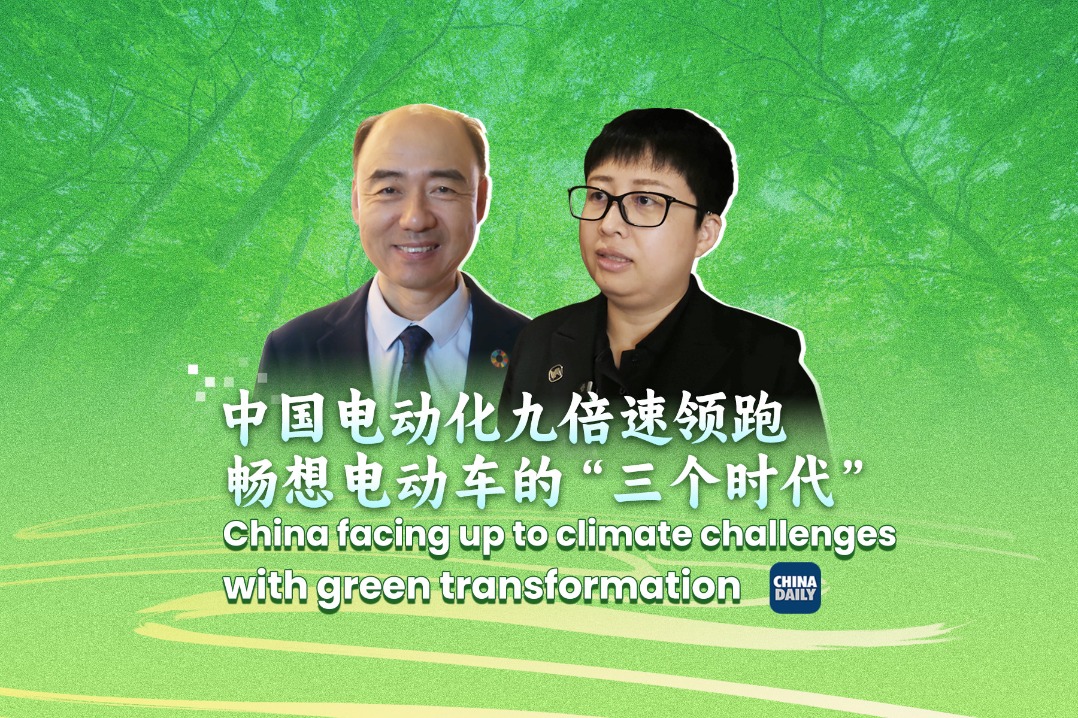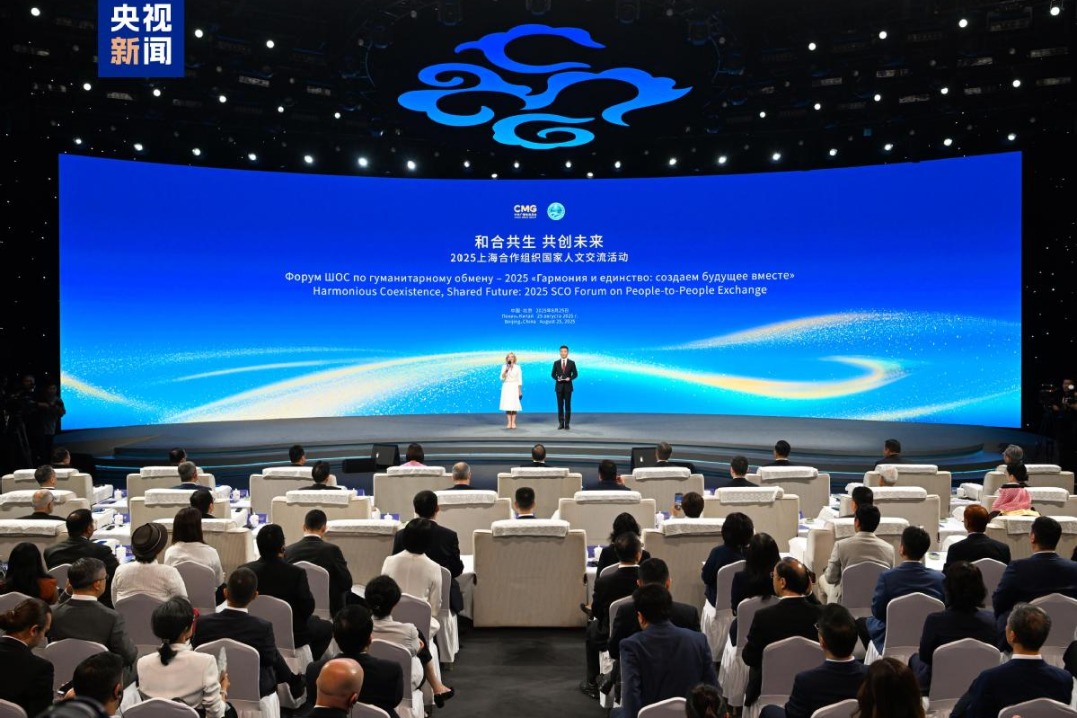BRICS can facilitate ASEAN's green transition


The balmy weather in northern Jakarta brings with it the scent of the sea as well as fishermen's worries — rising sea levels, declining fish catches, and increasing prices of daily necessities — highlighting the conflicting realities in Indonesia and many other countries in Southeast Asia.
Even countries rich in natural resources are feeling the damaging impact of climate change. But within this vulnerability exists an opportunity. Indonesia has huge renewable energy potential, which can be unleashed through pragmatic regional collaboration and strategic partnerships.
Indonesia has about 40 percent of the world's geothermal reserves and, as a tropical area, it can store 200 gigawatts of solar energy. While initiatives such as the Cirata floating solar panel (generating 145 MW) and rooftop solar panel projects are also promising, its rivers can produce more than 75 GW of hydropower.
Indonesia's goal is clear: 31 percent renewables in the national energy mix by 2050 and net-zero emissions by 2060. And the Indonesian government has already allocated $20 billion for the "Just Energy Transition Partnerships" initiative, targeted at gradually eliminating the use of coal.
However, Indonesia faces some significant challenges, because despite their immense potential, renewable energy comprises a mere 13 percent of all energy sources, with coal still having 65 percent share in the total energy mix. And high exploration costs and messy regulations restrict the expansion of the geothermal sector.
Indonesia generates only 0.3 GW of solar energy, and the development of hydropower demands balancing environmental protection with economic development. Limited funding, inadequate infrastructure, difficulty in unlocking green energy potential, as well as political, economic and social hurdles are the other challenges facing Indonesia.
Acknowledging their common challenges and shared destiny, Southeast Asian nations are increasingly turning to collaboration, especially through three ASEAN mechanisms.
The ASEAN Taxonomy for Sustainable Finance, which promotes sustainable activities and investments in the region, and helps direct capital toward genuine green projects, prevent green-washing and build investor confidence.
The ASEAN smart energy network aims to upgrade and enhance the quality of infrastructure. This smart grid is crucial for the more effective use of solar power plants, as well as facilitating cross-border energy trade.
And the ASEAN Plan of Action for Energy Cooperation 2026-30, which focuses on a regional, people-centric approach to energy transition, has set a target to increase renewable energy share in the total energy capacity to 35 percent.
But Indonesia and Vietnam, another ASEAN member state, are under immense pressure to boost economic growth by increasing the use of coal while taking measures to reduce their carbon emissions. Complicating the matter further are weak national grids, which make energy distribution in the region difficult, and the lack of financing.
Additionally, the technical complexities increase when navigating national policies, regulations and priorities that often conflict with one another, hindering regional cooperation. To overcome these difficulties, countries in the region have to adopt an "ASEAN approach", that is, a flexible approach aimed at achieving incremental progress.
Almost six decades of steering Southeast Asia's economy, with its diversity, has developed what can be called "ASEAN wisdom", characterized by a "lowest common denominator" approach. This pragmatic strategy simplifies concepts and agreements to ensure a broad agreement across diverse political, economic and cultural systems, in order to achieve success.
For example, its "ASEAN minus X" formula allows a sub-group of willing and able ASEAN members to move forward, keeping the door open for others to join later. It recognizes that not all members start from the same point or have equal capacity. This flexibility will prevent the slowest mover toward green transition from "holding" the entire bloc hostage, permitting tangible development even when unanimous consensus is difficult to reach.
For collaboration in green industries, this could help initiate cross-border development of the solar power sector by a few countries first. This is where BRICS comes in.
BRICS think tanks and enterprises have the technological ability, financial means and policy knowledge to facilitate ASEAN's green transition. Their support can be catalytic, first as an experience and innovation bridge, while BRICS think tanks can partner with ASEAN member states' institutions and research centers to conduct joint research and data-sharing to reduce geothermal exploration costs, promote sustainable agriculture, strengthen coastal societies' climate resilience, and lower energy storage costs.
Second, Chinese enterprises can boost investment and improve the use of green technologies, as well as help modernize Indonesian public transport and strengthen its electric vehicle infrastructure, while Brazil's bioenergy knowledge could improve sustainable practices, and BRICS New Development Bank could offer green financing, which would make de-risking geothermal projects easier in Indonesia, support wind farms in Vietnam, and build smart grids in other parts of the region. And public-private partnerships can help synergize international measures with local knowledge and needs to promote green industries.
Besides, BRICS believes that one size does not fit all. This is especially true for Southeast Asian countries given their immense diversity. As such, green solutions should be context-specific, co-created, and must avoid imposing external models.
There is also a need to build a Southeast Asia where sustainability and prosperity go hand-in-hand, enough jobs are created to ensure every able-bodied person gets gainful employment and countries pursue green transition. But that can only be achieved if regional countries unite to build a truly shared future for humankind.
The author is a senior assistant professor at the Department of International Relations, Universitas Indonesia. The views don't necessarily reflect those of China Daily.
If you have a specific expertise, or would like to share your thought about our stories, then send us your writings at opinion@chinadaily.com.cn, and comment@chinadaily.com.cn.


































